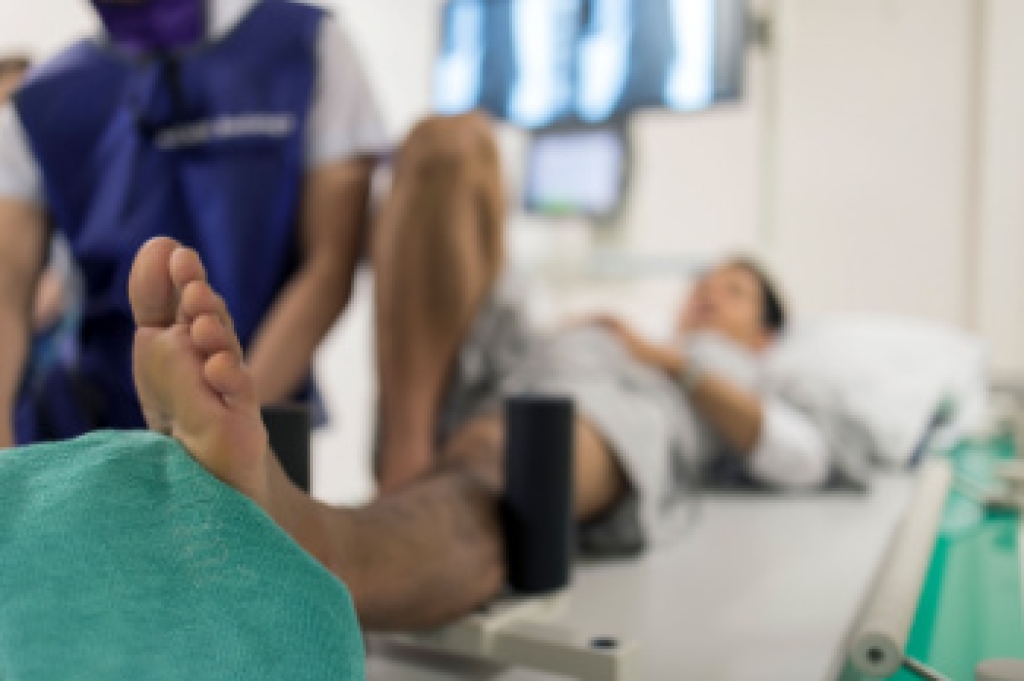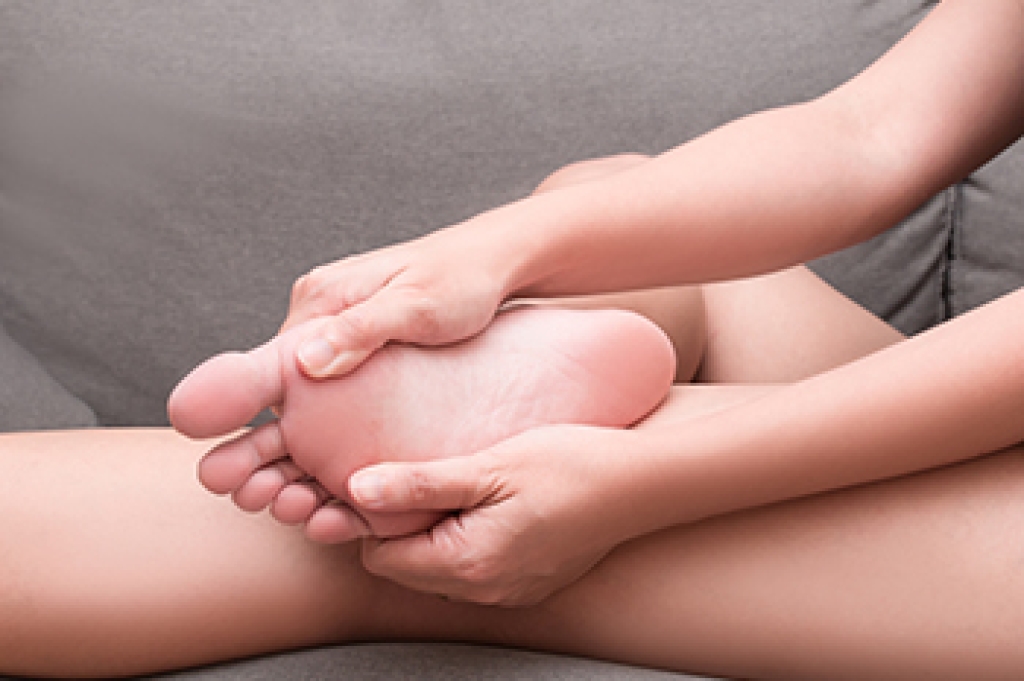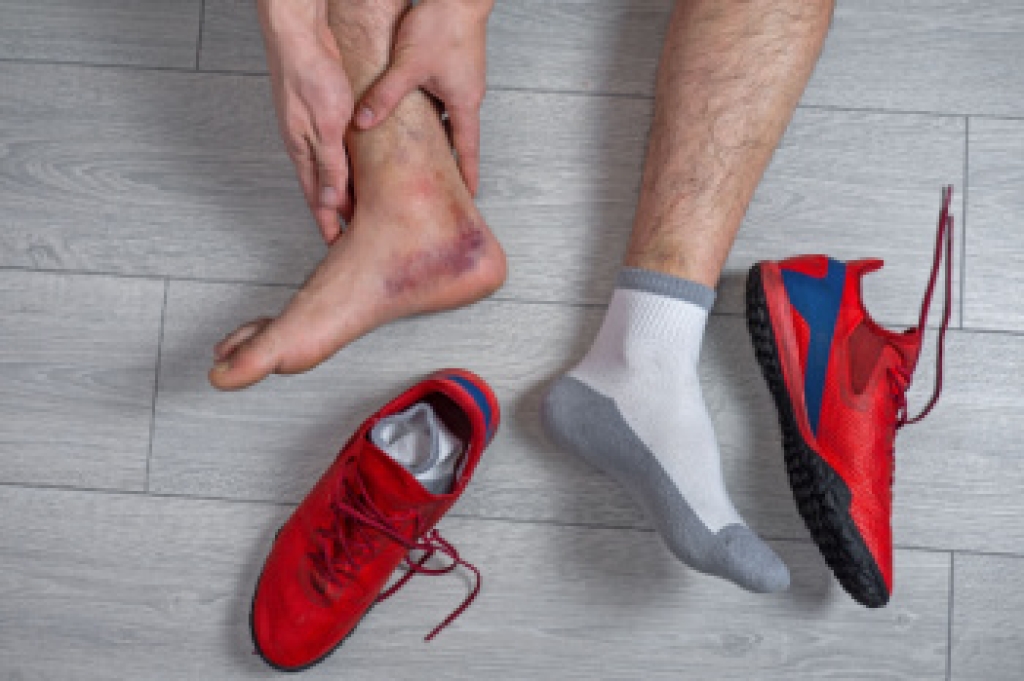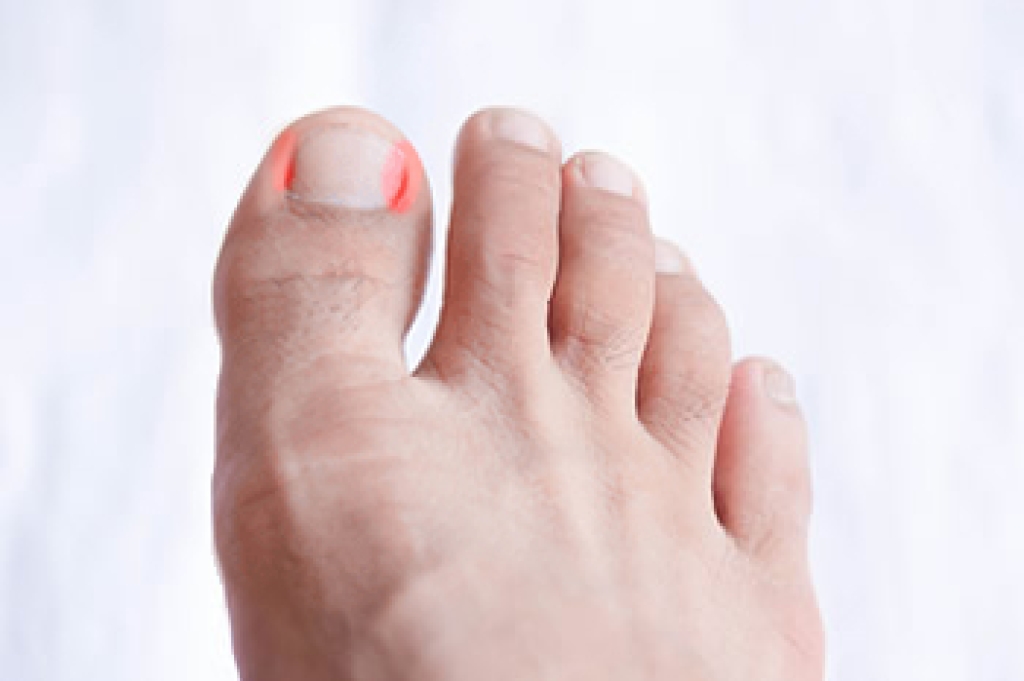Blog
Blog
Types of Avulsion Fractures in the Foot

An avulsion fracture occurs when a small piece of bone is pulled away by a tendon or ligament after a sudden force or twisting motion. In the foot, these injuries can affect several areas. The most frequent type involves the fifth metatarsal, located on the outer edge of the foot, often resulting from rolling the ankle outward. The calcaneus, or heel bone, can also experience an avulsion fracture at the back where the Achilles tendon attaches. Less common sites include the cuboid, navicular, and talus bones, where strong tendons can pull off small bone fragments during intense movements. Symptoms of avulsion fractures include swelling, bruising, and pain that worsens with walking or bearing weight. A podiatrist can diagnose the specific fracture location using imaging and determine whether immobilization or surgery is necessary to restore alignment and prevent chronic pain. If you have unexplained foot pain, it is suggested that you make an appointment with a podiatrist for a diagnosis and suggested treatment.
A broken foot requires immediate medical attention and treatment. If you need your feet checked, contact David Lambarski, DPM from Northeast Foot Care. Our doctor can provide the care you need to keep you pain-free and on your feet.
Broken Foot Causes, Symptoms, and Treatment
A broken foot is caused by one of the bones in the foot typically breaking when bended, crushed, or stretched beyond its natural capabilities. Usually the location of the fracture indicates how the break occurred, whether it was through an object, fall, or any other type of injury.
Common Symptoms of Broken Feet:
- Bruising
- Pain
- Redness
- Swelling
- Blue in color
- Numbness
- Cold
- Misshapen
- Cuts
- Deformities
Those that suspect they have a broken foot shoot seek urgent medical attention where a medical professional could diagnose the severity.
Treatment for broken bones varies depending on the cause, severity and location. Some will require the use of splints, casts or crutches while others could even involve surgery to repair the broken bones. Personal care includes the use of ice and keeping the foot stabilized and elevated.
If you have any questions, please feel free to contact our offices located in Amsterdam and Clifton Park, NY . We offer the newest diagnostic and treatment technologies for all your foot care needs.
Ball of the Foot Pain Could Be Sesamoiditis

Sesamoiditis is a painful condition that affects the ball of the foot, specifically around the big toe joint, where two small bones called sesamoids are located. These bones act like pulleys to help the tendons move smoothly, but they can become irritated or inflamed due to overuse, repetitive pressure, or high-impact activities like running or dancing. Symptoms include a dull or sharp pain beneath the big toe, swelling, bruising, and difficulty bending or bearing weight on the toe. The area may feel tender to the touch and may worsen with certain shoes or prolonged activity. A podiatrist can diagnose sesamoiditis through a physical exam and imaging, such as X-rays or an MRI scans to rule out fractures. Treatment often includes custom orthotics, padding, anti-inflammatory medications, and footwear changes. In more severe cases, immobilization or injections may be necessary. It is suggested that you schedule an appointment with a podiatrist to address persistent foot pain.
Sesamoiditis is an unpleasant foot condition characterized by pain in the balls of the feet. If you think you’re struggling with sesamoiditis, contact David Lambarski, DPM of Northeast Foot Care. Our doctor will treat your condition thoroughly and effectively.
Sesamoiditis
Sesamoiditis is a condition of the foot that affects the ball of the foot. It is more common in younger people than it is in older people. It can also occur with people who have begun a new exercise program, since their bodies are adjusting to the new physical regimen. Pain may also be caused by the inflammation of tendons surrounding the bones. It is important to seek treatment in its early stages because if you ignore the pain, this condition can lead to more serious problems such as severe irritation and bone fractures.
Causes of Sesamoiditis
- Sudden increase in activity
- Increase in physically strenuous movement without a proper warm up or build up
- Foot structure: those who have smaller, bonier feet or those with a high arch may be more susceptible
Treatment for sesamoiditis is non-invasive and simple. Doctors may recommend a strict rest period where the patient forgoes most physical activity. This will help give the patient time to heal their feet through limited activity. For serious cases, it is best to speak with your doctor to determine a treatment option that will help your specific needs.
If you have any questions, please feel free to contact our offices located in Amsterdam and Clifton Park, NY . We offer the newest diagnostic and treatment technologies for all your foot care needs.
Facts on the Symptomatic Accessory Soleus Muscle

The accessory soleus muscle, or ASM, is a rare muscle condition that can cause pain and numbness on the inner side of the ankle, similar to tarsal tunnel syndrome. ASM usually starts from the fibula or soleus muscle and connects to the Achilles tendon or heel bone. It often appears as a small lump or swelling along the inner back of the ankle. An MRI scan is typically used to confirm its presence. Most cases are mild and can be managed by simply observing the symptoms. However, if the pain becomes severe or impacts daily activities, surgery to remove the extra muscle may be considered. If you have this type of muscle pain, it is strongly suggested that you visit a podiatrist for a proper diagnosis and treatment that is right for you.
Achilles tendon injuries need immediate attention to avoid future complications. If you have any concerns, contact David Lambarski, DPM of Northeast Foot Care. Our doctor can provide the care you need to keep you pain-free and on your feet.
What Is the Achilles Tendon?
The Achilles tendon is a tendon that connects the lower leg muscles and calf to the heel of the foot. It is the strongest tendon in the human body and is essential for making movement possible. Because this tendon is such an integral part of the body, any injuries to it can create immense difficulties and should immediately be presented to a doctor.
What Are the Symptoms of an Achilles Tendon Injury?
There are various types of injuries that can affect the Achilles tendon. The two most common injuries are Achilles tendinitis and ruptures of the tendon.
Achilles Tendinitis Symptoms
- Inflammation
- Dull to severe pain
- Increased blood flow to the tendon
- Thickening of the tendon
Rupture Symptoms
- Extreme pain and swelling in the foot
- Total immobility
Treatment and Prevention
Achilles tendon injuries are diagnosed by a thorough physical evaluation, which can include an MRI. Treatment involves rest, physical therapy, and in some cases, surgery. However, various preventative measures can be taken to avoid these injuries, such as:
- Thorough stretching of the tendon before and after exercise
- Strengthening exercises like calf raises, squats, leg curls, leg extensions, leg raises, lunges, and leg presses
If you have any questions please feel free to contact our offices located in Amsterdam and Clifton Park, NY . We offer the newest diagnostic tools and technology to treat your foot and ankle needs.
Ingrown Toenails and Other Common Toenail Conditions

Ingrown toenails occur when the edge of the nail grows into the surrounding skin, causing pain, redness, and swelling. They often result from improper trimming, wearing tight shoes, or injury, and can worsen if infection develops. Early treatment helps relieve discomfort and prevents further complications. Other toenail conditions, such as fungal infections, thickened nails, or nail trauma, can also cause changes in nail color, shape, and texture. These issues may be uncomfortable and make walking or wearing shoes difficult. A podiatrist can safely remove part of an ingrown nail, prescribe medication for infection, or recommend treatments to restore healthy nail growth. Paying attention to nail health, keeping feet clean and dry, and trimming nails straight across are simple steps that help prevent problems. If you have painful or abnormal toenails, it is suggested that you see a podiatrist for a proper diagnosis and appropriate care.
Ingrown toenails may initially present themselves as a minor discomfort, but they may progress into an infection in the skin without proper treatment. For more information about ingrown toenails, contact David Lambarski, DPM of Northeast Foot Care. Our doctor can provide the care you need to keep you pain-free and on your feet.
Ingrown Toenails
Ingrown toenails are caused when the corner or side of a toenail grows into the soft flesh surrounding it. They often result in redness, swelling, pain, and in some cases, infection. This condition typically affects the big toe and may recur if it is not treated properly.
Causes
- Improper toenail trimming
- Genetics
- Improper shoe fitting
- Injury from pedicures or nail picking
- Abnormal gait
- Poor hygiene
You are more likely to develop an ingrown toenail if you are obese, have diabetes, arthritis, or have any fungal infection in your nails. Additionally, people who have foot or toe deformities are at a higher risk of developing an ingrown toenail.
Symptoms
Some symptoms of ingrown toenails are redness, swelling, and pain. In rare cases, there may be a yellowish drainage coming from the nail.
Treatment
Ignoring an ingrown toenail can have serious complications. Infections of the nail border can progress to a deeper soft-tissue infection, which can then turn into a bone infection. You should always speak with your podiatrist if you suspect you have an ingrown toenail, especially if you have diabetes or poor circulation.
If you have any questions, please feel free to contact our offices located in Amsterdam and Clifton Park, NY . We offer the newest diagnostic and treatment technologies for all your foot care needs.
Blog Archives
- 2025
- 2024
- 2023

